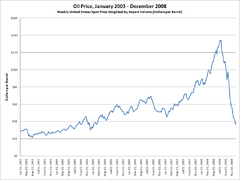The chemical reaction can be occurred by a certain number of molecules with energy equal to or greater than the activation energy. When an increase in concentration, the number of molecules with the minimum required energy will increase, and also the rate of reaction will also increase. For a reaction to occur there must be input energy to initiate the reaction and this is called activation energy. This energy is to provide the reaction to reach its transition state. The source of this energy is to push the reaction forward Which is typically heat energy from the surroundings. And to make the reaction a much faster catalyst is added which is one of the boosters for all the reactions, these catalysts are most of all the enzymes. Most of the chemical reactions as well as Reliant Energy Plans and all the biochemical reactions shall not be happened simultaneously, for that input of energy is there to get started.

Heat energy
The activation energy needs some source and that is the heat energy. The molecular motions can speed up by using this energy because this increases the collision by increase the force and frequency. It moves slightly to the atoms and molecules to reach their transition state. So that heating in the stage of reactions is required more and more. If there is high activation energy then there is a slower chemical reaction. Collision theory is there which provides the qualitative information about the chemical reaction and rate of their Occur and also shows that molecules have to collide to make some reactions. Energy is to provide bond braking in all the reactions and when the new products formed they release energy. Endothermic reactions absorb energy, as well as exothermic reactions, release energy. Therefore the law of conversation shows that matter cannot be created or destroy.
Heat rate
This heat rate is generally used in power stations to show their plant’s efficiency. The heart rate is the ratio of thermal energy input to the electrical energy output. Heat rate and efficiency are inversely related. It is easy to convert the one from another, which shows higher the heat rate then lower will be the efficiency of the power plant. The truth is that the heat is transferred from the hot location body to the cold location, this is because the hot temperature has more conductivity than the cold temperature. This heat transfer continues until temperature difference occurs between the two locations. Heat transfer stops on the equilibrium stage where the two locations have the same temperature. Heat transfer also depends on the material. The area is the main Constitution because according to the amount of area the heat transfer changes. The lower area will conduct heat faster and a huge area will conduct heat slower than the lower area. The thickness of the material also has to consider because highly thicker material has slow conduction as well as distance. Energy is produced through an enormous number of sources even through us. That all energies have different applications and forms, like natural sources such as sunlight, wind, water, ocean tides, etc are all used for producing energy almost in the form of electric and mechanical energy. As per our requirement, they all convert into various forms and storage. Sometimes electrical energy is used to make mechanical energy and sometimes vice versa. So that the heart rate depends on the specific operation and its properties.
